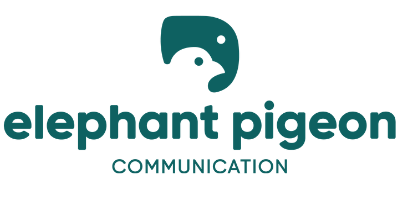Email marketing is hands down one of the best things you can do to grow your farm or food business. It’s a big call, but it’s a hill I’m happy to die on.
Why it’s so important
In almost every meeting or consultation I’ve had this year, when I bring up email marketing I’ve been asked “but isn’t it a bit spammy? People don’t actually read those, do they?”
My answer? People know what they’re doing when they hand over an email address. For the most part, we’re all a bit more selective about where we give them out these days. So when someone joins your list, they’re saying “yes please, tell me more.” They want to know about (and buy) your products. They want the behind-the-scenes, the updates on what’s being planted or preserved, and to be first to know when it’s available. And most people know that’s something a social media follow can’t guarantee them anymore, thanks to the algorithm and shifting newsfeeds.
How email can super-charge your marketing
Sure, there’s still room for your emails to be spammy, but that’s only if you’re BEING spammy. Done well, email marketing:
- builds stronger connections and loyalty with your food business or farm’s customers.
- has a much higher conversion (sales) rate than social media or your website
- lets you communicate with more people (not everyone is on Instagram!)
- keeps you front of mind by exposing your audience to your message in more places
- can give you a clearer idea of what your customers are interested in, thanks to tracking and analytics
Email future-proofs your communication
Social media is rented space. Zuckerberg and co can change the rules at any time, platforms crash (remember the great Instagram outage of 2019?) and suddenly the basket you put all your marketing eggs in has crashed to the ground. You can’t pick up the thousand followers you used to have and put them in another social media basket – they’re gone.
But an email list? You own that. E.g. if you’re ready to upgrade from MailChimp (a great FREE and user-friendly email platform, if you don’t already have one), you can take your list and go to another email marketing tool. You can use the data in it to target Facebook ads. You can even just send them a quick note from Gmail, if you have to.
A few more reasons not to ignore it…
Still need a bit of convincing?
- People are 6 times more likely to click on a link in an email than on social media (CampaignMonitor)
- On average, customers who are marketed to through email spend 138% more (HatchBuck)
- Social followers who also hear from you via email are 3 times more likely to share your social media posts (QuickSprout)
Tips for nailing your email marketing (even when you’re pressed for time)
First, one note: I’m deliberately not leading with tips on building your list. That blog is definitely coming, but I don’t want you to wait until you’ve got “enough” of a list to start sending emails! I started sending mine when I only had three subscribers, and two of them became clients.
1. Add value – make your emails a must-read!
Only sending emails focussed on getting people to buy is that spammy behaviour we talked about earlier. It’s just stuffing a catalogue in their inbox, and before long, they’ll learn not to open your emails unless they’re in a mind to spend money.
But establishing a newsletter or other regular update full of useful, entertaining or interesting content? That gives back to your community, shows them you’re on the same page and strengthens the connection they feel with your products. Be that business whose name they’re excited to see in their inbox. They’ll be more likely to open your future emails, and you’ll have a more engaged audience when it is time to focus on selling.
You can still mention and promote your products in these, just don’t make it the star. Be generous!
2. Don’t overthink it
I get it – email marketing can be scary and it’s easy to fall into the trap of thinking every message needs to be a (time-consuming) showstopper. But the more you build it up in your head the less likely you are to get started, and the longer you’ll be missing out on the benefits.
Often the most effective newsletters are simple, short, and pretty casual. Like an email from that busy friend who moved overseas. The one who you’re not so close to that you’d message every day, but who you enjoy updates from.
My favourite way to put that approach into play is to pick one of your regular customers, who shows a genuine interest in you and your business, and write a short email like it’s directly to them. Think of the questions they ask, or the sort of photos that really get them commenting on social media, and use that to fill them in on what’s going on in your corner of the world. Tell them what’s been planted and what’ll be available next week. Suggest a book they might like. Add a picture of the newest litter of farm puppies.
3. Include Calls to Action
For each email you send to your list – both newsletters and promo messages – have a clear idea of what you want them to do after reading it.
Is it buy a new product, or tickets to an event? Join your CSA? Let you know what they’d like to see you offer next? Even if it’s as simple as reading a blog or recipe you’ve shared, make it easy for them do (hello, clear links and big buttons) and encourage them to get excited about doing it (e.g. “tag me in your photos when you’ve given it a try!”)
Calls to Action help drive people to do what you want them to do, and make for better tracking so you can see what works.
4. Have a helpful, engaging welcome email
Set up an automated email thanking your new subscriber a few minutes after they sign up. This gives them confirmation that they’re on the list, and should make them feel good about being there – appreciated, and excited for what’s next. Like a virtual high five.
Make sure you pop in another call to action that can be followed up on while they’re waiting for the next newsletter, e.g. to follow you on social media, or which markets they can find you at this weekend. If you want to add more detail, share a bit more of your story. Tell a joke. Tug at the heart strings and funny bones.
Remember – the average open rate for welcome emails is 82% (MUCH higher than most newsletters or promo emails) so use it to your advantage.
Up next…
Check out my list of 20 ways to grow your list, specifically for farmers and food businesses.


Recent Comments